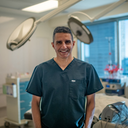Posted underTummy Tuck q&a
Are the Ab Muscles Cut and Removed During a Tummy Tuck - or Simply Stitched Together?
I was curious during the process of a tummy tuck, do you actually cut and remove part of the abdominal muscles or just the skin on top?
Answers (13)
From board-certified doctors and trusted medical professionals
More Tummy Tuck Questions
See all Tummy Tuck Q&AWE SEND PRETTY
EMAILS
What’s trending? Who’s turning heads? Which TikTok myths need busting? We’ve got you. No fluff, no gatekeeping—just real talk. Get our free, unfiltered newsletter.




